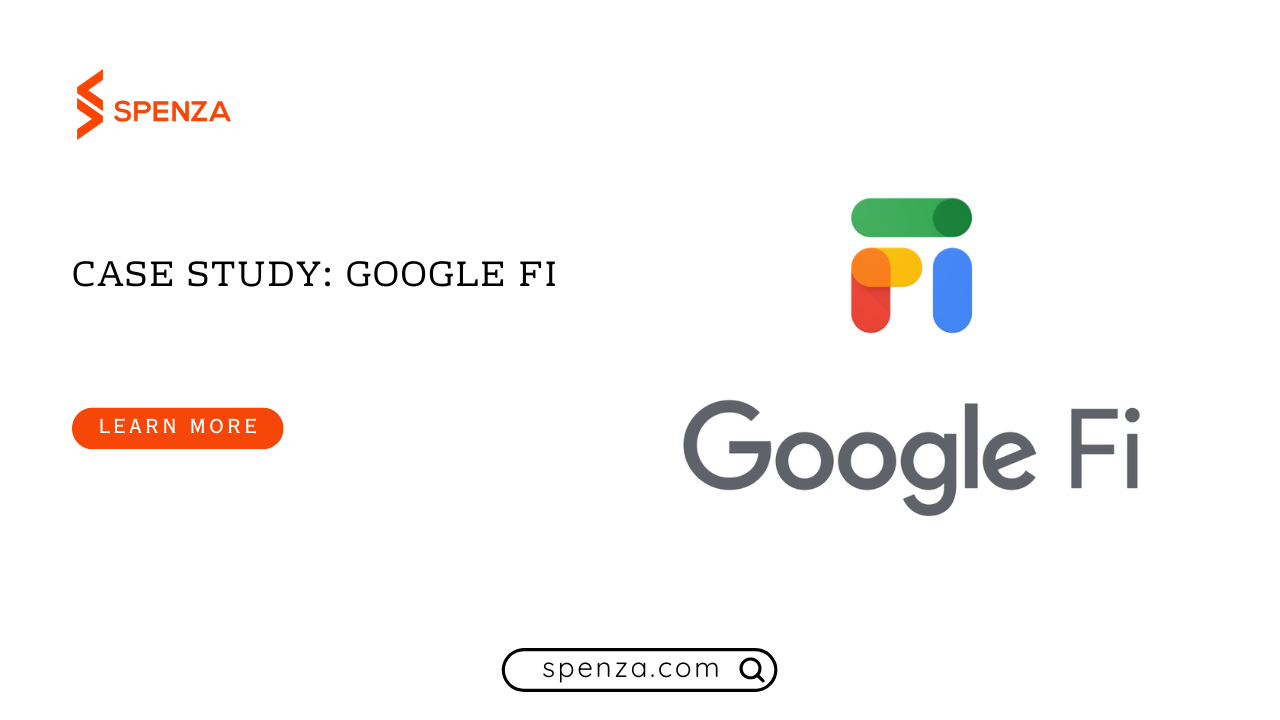Launched in 2015, Google Fi, formerly known as Project Fi, marked Google’s ambitious entry into the mobile network space as a mobile virtual network operator (MVNO). Google aimed to redefine traditional mobile services by delivering seamless, flexible, and innovative connectivity. This case study offers a detailed Google Fi review, covering its unique features, the challenges faced, and the lessons learned, especially in the era of 5G mobile networks.
Google Fi Review: A Look at the Innovative Approach
Google Fi set out to revolutionise the mobile network industry by combining Wi-Fi and cellular networks for optimal connectivity. Below are the standout elements of Google Fi’s approach:
- Network Switching Technology: One of Google Fi’s core innovations is its ability to switch seamlessly between multiple carrier networks and Wi-Fi connections to provide the best possible signal. It initially partnered with Sprint, T-Mobile, and U.S. Cellular, expanding later to include additional partners to improve network coverage and reliability.
- Transparent Pricing Model: Google Fi introduced a simple, flat-rate pricing structure with unlimited calls and texts. Data was charged per gigabyte, making it easier for customers to manage costs compared to traditional carriers with complex pricing models.
- Global Coverage Without Extra Fees: Unlike many competitors, Google Fi offered international coverage in over 200 countries at the same rate as domestic data. This feature appealed to frequent travelers, differentiating Google Fi in a competitive market.
- Device Compatibility: Initially limited to Google’s Nexus devices, Google Fi expanded to support a broader range of Android and iOS devices, increasing accessibility for a wider audience.
Challenges Faced by Google Fi as an MVNO
Despite its innovative approach, Google Fi faced several challenges as a
- Network Dependence: Google Fi’s reliance on multiple carriers required complex agreements and negotiations, sometimes leading to service limitations and dependency issues.
- Building Brand Recognition: Competing with established carriers, Google Fi had to invest heavily in branding and marketing to gain consumer trust and awareness, a common hurdle for new MVNOs.
- Keeping Up with Technological Advancements: The rapid rollout of the 5G mobile network posed challenges. Google Fi had to continuously innovate to maintain service quality and stay competitive as the industry transitioned to 5G.
How 5G is Shaping Google Fi’s Future
As the mobile network landscape shifts towards 5G, Google Fi has had to adapt its strategy to stay relevant. The transition to 5G mobile networks presents both opportunities and challenges for Google Fi:
- Enhanced Network Performance: With the deployment of 5G, Google Fi can provide faster data speeds and lower latency. This enhances the overall user experience, particularly for data-intensive applications like streaming, gaming, and video conferencing.
- Competition with Traditional Carriers: The arrival of 5G technology has intensified competition with established carriers. Google Fi has had to ensure that its service quality and 5G offerings are on par with competitors to maintain its customer base.
- Investments in Technology: To keep pace with 5G advancements, Google Fi has invested in expanding its partnerships with network carriers that support 5G. This allows Google Fi to offer comprehensive 5G coverage without owning any physical network infrastructure, leveraging its MVNO model for a broader reach.
Customer Feedback: Successes and Shortcomings
Google Fi’s user base has shared mixed experiences regarding its services. Understanding customer feedback provides a deeper insight into Google Fi’s strengths and weaknesses:
- Positive Experiences: Many users appreciate the straightforward pricing model, especially for international travel, and the seamless switching between networks. For example, one long-term user mentioned having minimal interaction with support and smooth device replacements when needed, highlighting the convenience and reliability of Google Fi. The global coverage without extra fees remains a significant benefit for travelers who rely on consistent connectivity abroad.
- Common Complaints: Some users report mixed network reliability, especially in specific regions. One user, based in California, noted occasional connectivity issues despite coverage maps indicating strong signals. Others expressed that while 5G offers faster speeds, Google Fi’s reliance on partner networks means some advanced features, like T-Mobile’s 5G UC, might not be fully available to Fi customers.
- Service Limitations: Customer service experiences have also been varied. While Google Fi’s device support and number porting processes have generally been positive, some customers felt frustrated by the technical troubleshooting required for service-related issues, such as capturing bug reports and waiting for resolutions. This level of tech-heavy interaction can be a drawback compared to the simpler support provided by traditional carriers.
- Device Compatibility and Performance: Many Google device users, such as those with Pixel phones, report a smoother experience compared to users with other brands. A user shared that their Google Pixel devices worked seamlessly on the Fi network, while their family’s Samsung Galaxy phones occasionally faced connectivity issues. This inconsistency between device performance has been a recurring theme in customer feedback.
- Network Switching and Data Use: Some users found managing data usage challenging due to unexpected data consumption when not connected to Wi-Fi. The simplicity of Google Fi’s pay-as-you-go data pricing appeals to many, but those who unintentionally use more data than planned may face higher bills. In such cases, alternative carriers like Mint Mobile, which offer more predictable data packages, have been considered.
Source: <Link>
Lessons from the Google Fi Experience
The journey of Google Fi offers valuable insights into the mobile service industry, particularly for mobile virtual network operators (MVNOs):
- Flexibility and Innovation are Essential: Google Fi’s success underscores the importance of flexibility and innovation in the MVNO space. Unique features like seamless network switching and pay-as-you-go pricing can attract a niche audience seeking transparent and adaptive services.
- Partnerships Come with Challenges: While network partnerships can enhance coverage, they can also lead to dependency and negotiation difficulties. MVNOs must strategically manage these relationships to maintain favorable terms.
- Importance of Branding and Marketing: Effective branding and strong marketing strategies are critical for new entrants in the telecom market. MVNOs need to build a distinct identity to compete with established carriers.
- Adapting to Technological Changes: With the rapid adoption of the 5G mobile network, ongoing innovation is crucial. Investing in advanced technology and expanding service offerings are necessary steps to remain competitive and meet evolving customer demands.
Supercharge your mobile business connectivity with Spenza — your MVNO, live in days.
Conclusion
This Google Fi review highlights the complexities of operating as a mobile virtual network operator (MVNO) in a competitive market. Google Fi’s focus on innovation, flexibility, and customer-centric pricing sets it apart, yet challenges such as network dependence and brand recognition remain. In the current landscape of 5G mobile networks, MVNOs must prioritize technological advancements while maintaining strong partnerships to succeed.
For more insights into MVNO strategies and industry trends, explore our blog on reselling mobile plans on Shopify.
Google Fi is a mobile service by Google that operates as a mobile virtual network operator (MVNO). It uses a unique technology to switch between multiple carrier networks and Wi-Fi connections, always seeking the best possible signal for users. This allows for seamless connectivity and reliable coverage without being tied to a single carrier.
Google Fi offers extensive international coverage, allowing users to use data in over 200 countries at the same rate as in the U.S. This makes it a popular choice for frequent travelers, as they can stay connected without incurring additional charges for international data usage.
Google Fi uses a simple and transparent pricing structure, with unlimited calls and texts, and data charged at a flat rate per gigabyte. This straightforward approach eliminates the confusion of traditional mobile plans, offering predictable monthly costs for users. For heavy data users, Fi also offers unlimited plans with capped data speeds after a certain threshold.
The introduction of 5G mobile networks has significantly enhanced Google Fi’s offerings. With 5G, Google Fi users experience faster data speeds, improved network reliability, and lower latency, particularly beneficial for streaming and data-intensive applications. Google Fi has also expanded its carrier partnerships to ensure wider 5G coverage for its users.
As an MVNO, Google Fi has encountered challenges such as dependency on multiple carrier networks, which can sometimes affect service quality and reliability. Additionally, competing with well-established carriers required Google Fi to heavily invest in brand recognition and marketing efforts to build consumer trust. Adapting to rapid technological changes, like the shift to 5G, also posed challenges in maintaining a competitive edge.
Get better business connectivity with Spenza — launch your MVNO in days. Book your free demo today!






